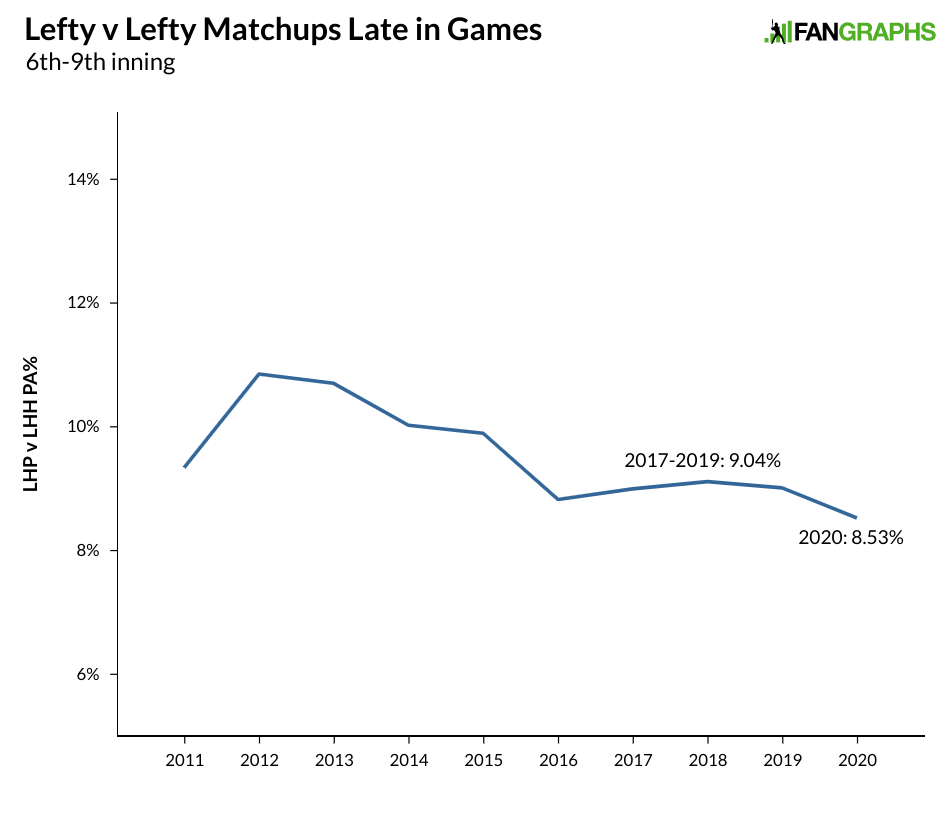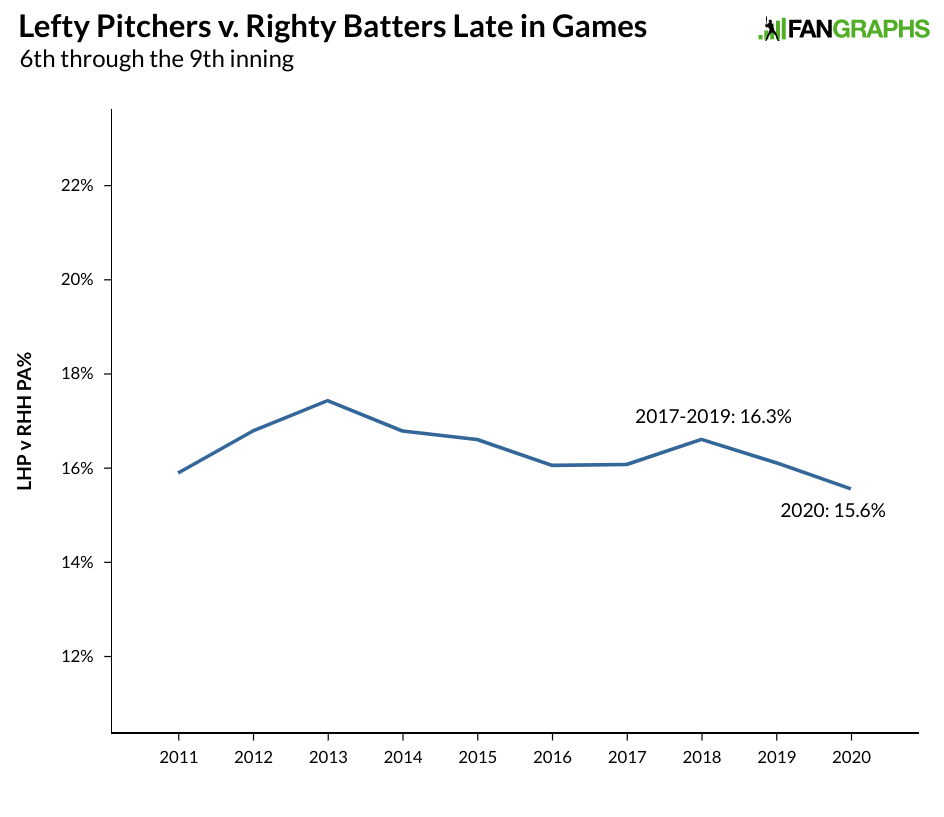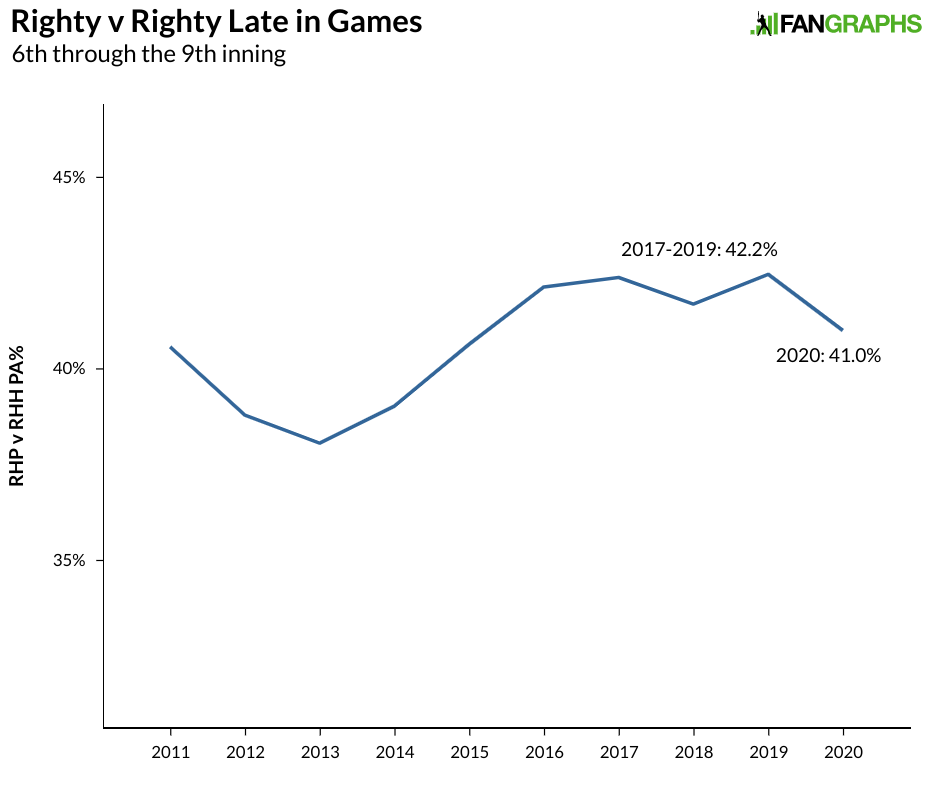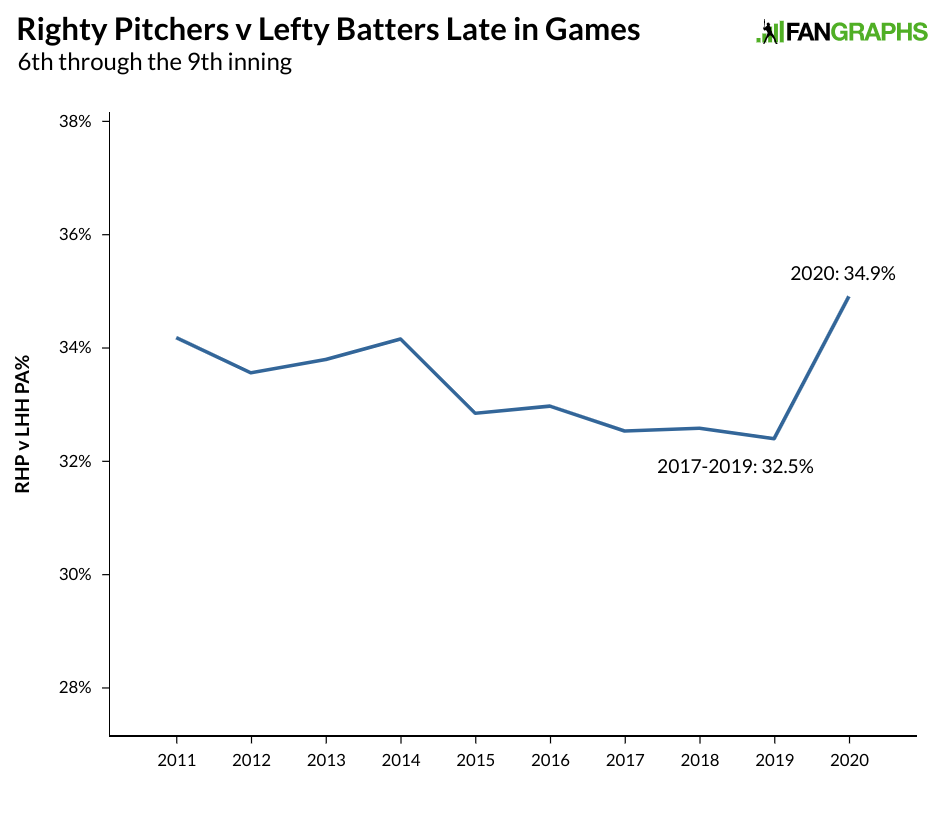The Three Batter Minimum’s Effect on Late-Game Strategy
The rule was seen as the death-knell of the LOOGY, preventing specialists from coming in to face just a single batter. One-batter appearances are occurring about half as often, so there’s certainly an impact there, but how that has changed the platoon advantage is a different matter. To start, let’s just look at the sixth through the ninth innings and how often we are seeing that lefty vs. lefty matchup. The graph below shows the percentage of lefty on lefty matchups late in games compared to total plate appearances:

We are definitely seeing a small decrease in the number of lefty on lefty matchups late in games. Does that mean that when a lefty comes in, managers are taking advantage and using a right-handed substitute? Here’s the same graph except with lefty pitchers against righty batters late in games:

What actually appears to be happening is that lefty relievers are simply being used less often. Lefty usage late in games dropped 1.2 percentage points compared to the previous three seasons, which is about one batter every three games shifting from lefties to righties. So where are those plate appearances going? Obviously, they are going to right-handed pitchers, but the breakdown against right-handed and left-handed batters is interesting. Here are the righty on righty matchups:

Another decrease, which means that all of the increase is coming for lefty batters against righty pitchers:

If we say an average night of games has 13 matchups, we are seeing roughly 10 more right-handed pitcher against left-handed batter matchups in the sixth inning or later every night. With less of a threat of the opposing manager bringing in a lefty, a manager can leave in his lefty batter. Additionally, he can bring in a lefty pinch hitter while worrying less about the threat of a pitching change, and if the righty pitcher has yet to pitch to three hitters, there are no concerns at all, as the pitcher has to stay in.
As for whether the change actually matters is a little less clear. Here’s how hitters have performed over the last few seasons in these situations.
| Matchup | 2017-2019 wRC+ | 2020 wRC+ |
|---|---|---|
| LHP vs. LHH | 81 | 81 |
| LHP vs. RHH | 99 | 101 |
| RHP vs. RHH | 91 | 100 |
| RHP vs. LHH | 98 | 90 |
The left-handed pitching matchups are virtually identical, but the right-handed pitching results have flip-flopped. Some of this could just be smalls samples, but it’s also possible that the lefty hitters being left in the game or coming in to pinch hit aren’t quite as good as your average lefty stick, and bring the average down. In similar fashion, it’s possible there are weaker righty hitters being removed for a left-handed batter, which might increase the talent level of the righties facing righties.
I also checked pinch-hitting generally and found, even looking only in the American League, that the number of pinch-hitting appearances hasn’t changed significantly over the last few years. I looked at the National League as well, and while we can’t glean anything from the year-over-year information due to the 2020 addition of the designated hitter, NL teams still use pinch hitters about 16% more often than AL teams.
Overall, we’re seeing fewer left-handed pitchers being used later in games, though they are just as effective as they have always been. Managers have been able to get the platoon advantage more often when facing righty pitchers, though most of that advantage has come in the form of fewer lefty relievers overall rather than using pinch hitters. While there’s a slight advantage to facing fewer lefties, particularly those lefty vs. lefty matchups, getting more righty pitching against lefty hitting hasn’t been beneficial based on the results.
It’s possible the expanded rosters and earlier relief entrances are playing games with these numbers; we might not expect to see the same thing in a typical regular season with fewer relievers and bench players. It’s also possible, probable even, that the natural consequence of limiting LOOGYs is going to be more righty pitching/lefty hitting matchups and that’s exactly what we are seeing. The issue could be further exacerbated with smaller rosters if we see more righty relievers and more lefty batters stay in the game later than they might otherwise with fewer pinch-hitting options on the bench. If the hope was more offense late in games, that hasn’t been the case, as offense in late-innings has declined from previous seasons and relative to the first five innings of games this year. If the hope was to see fewer relievers, whether the rule change has accomplished it is up in the air.



